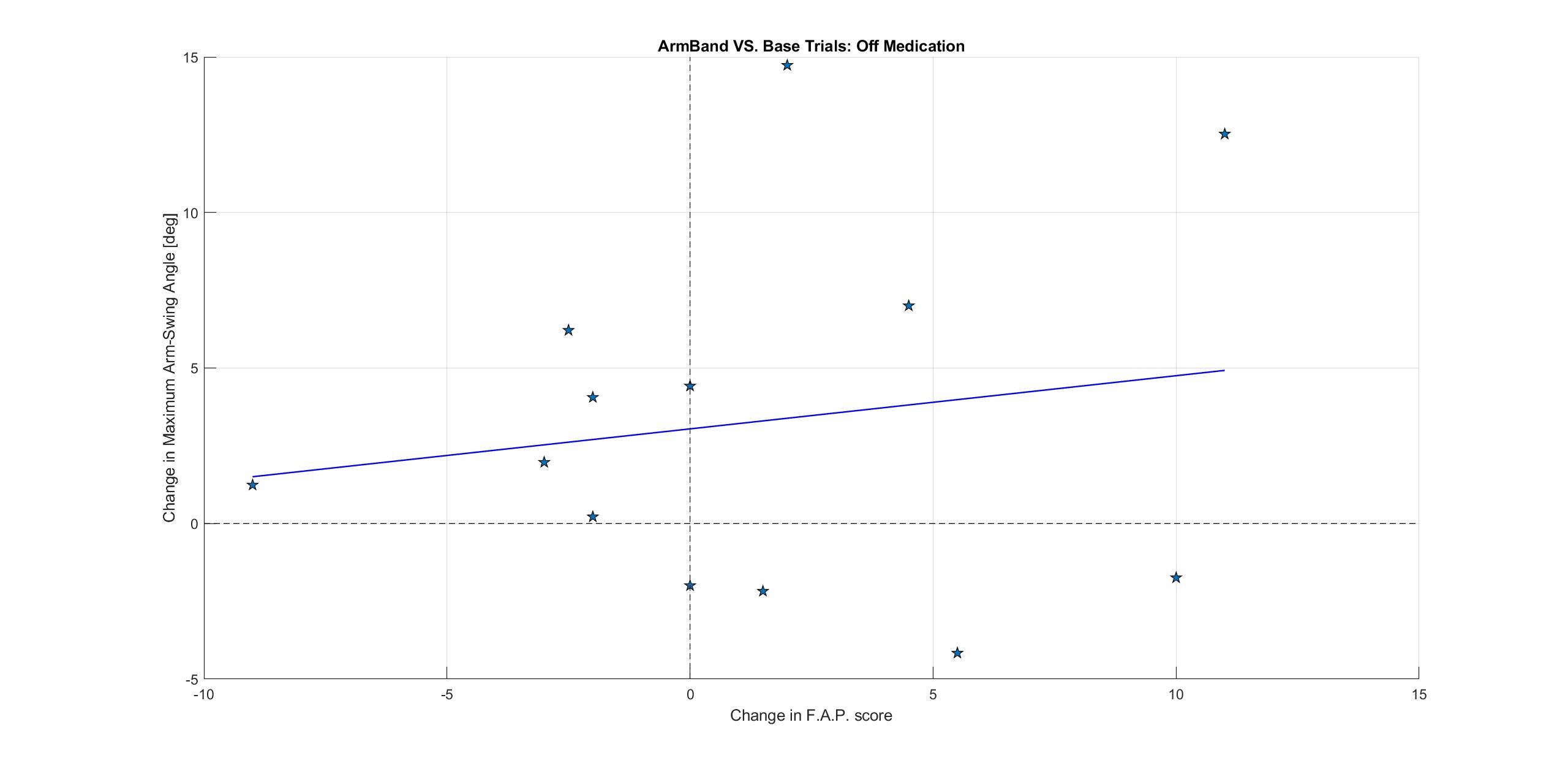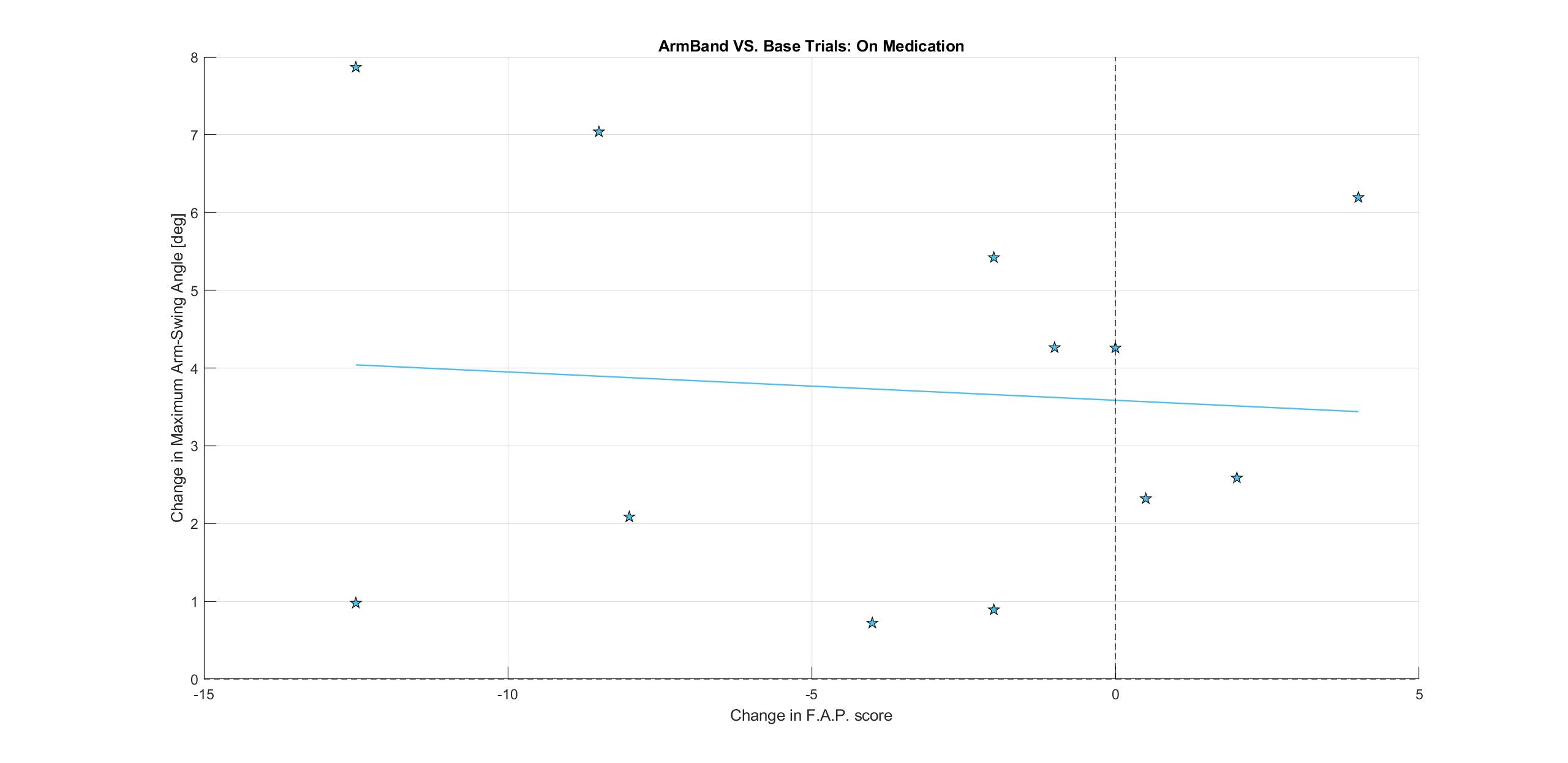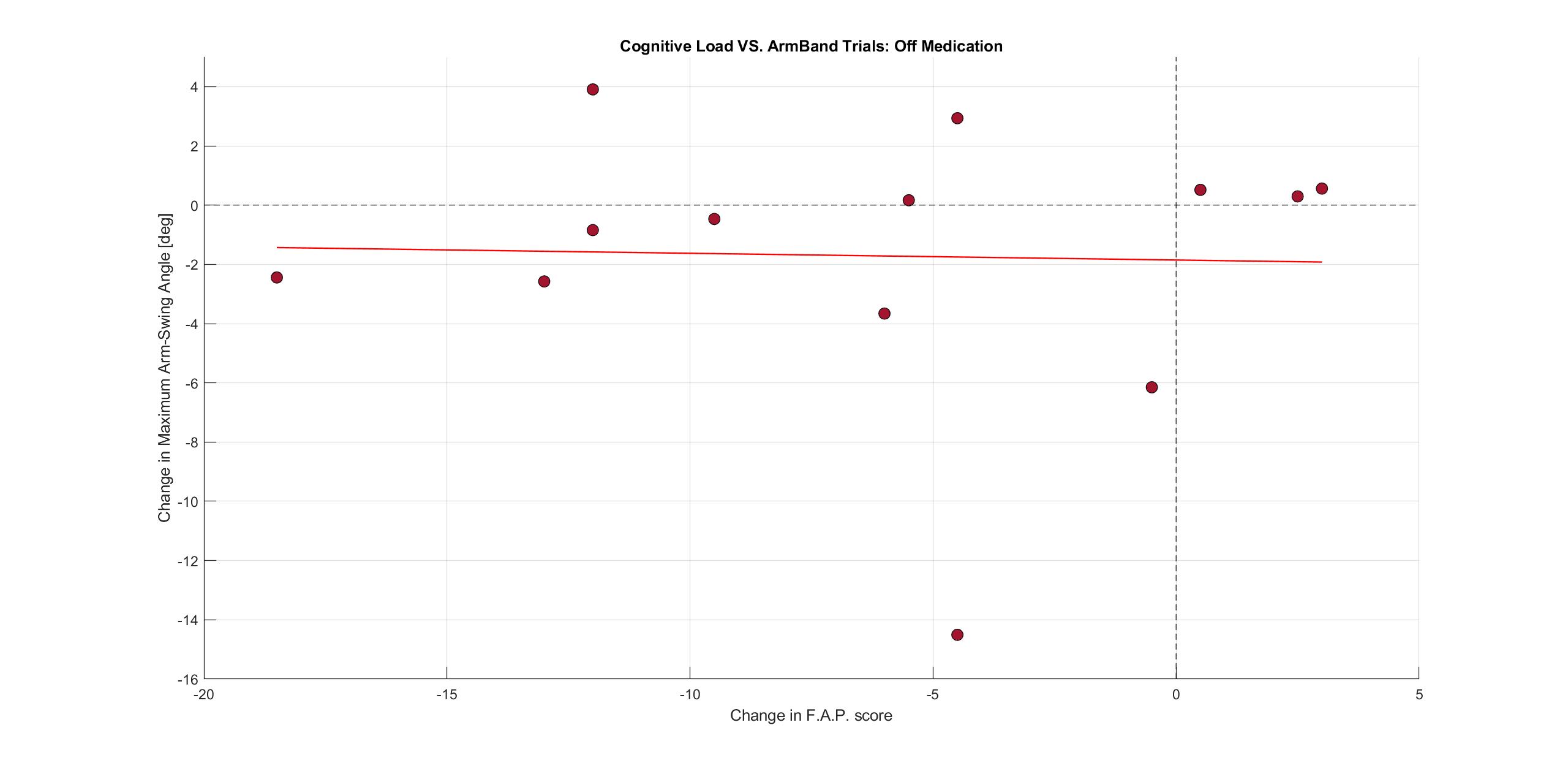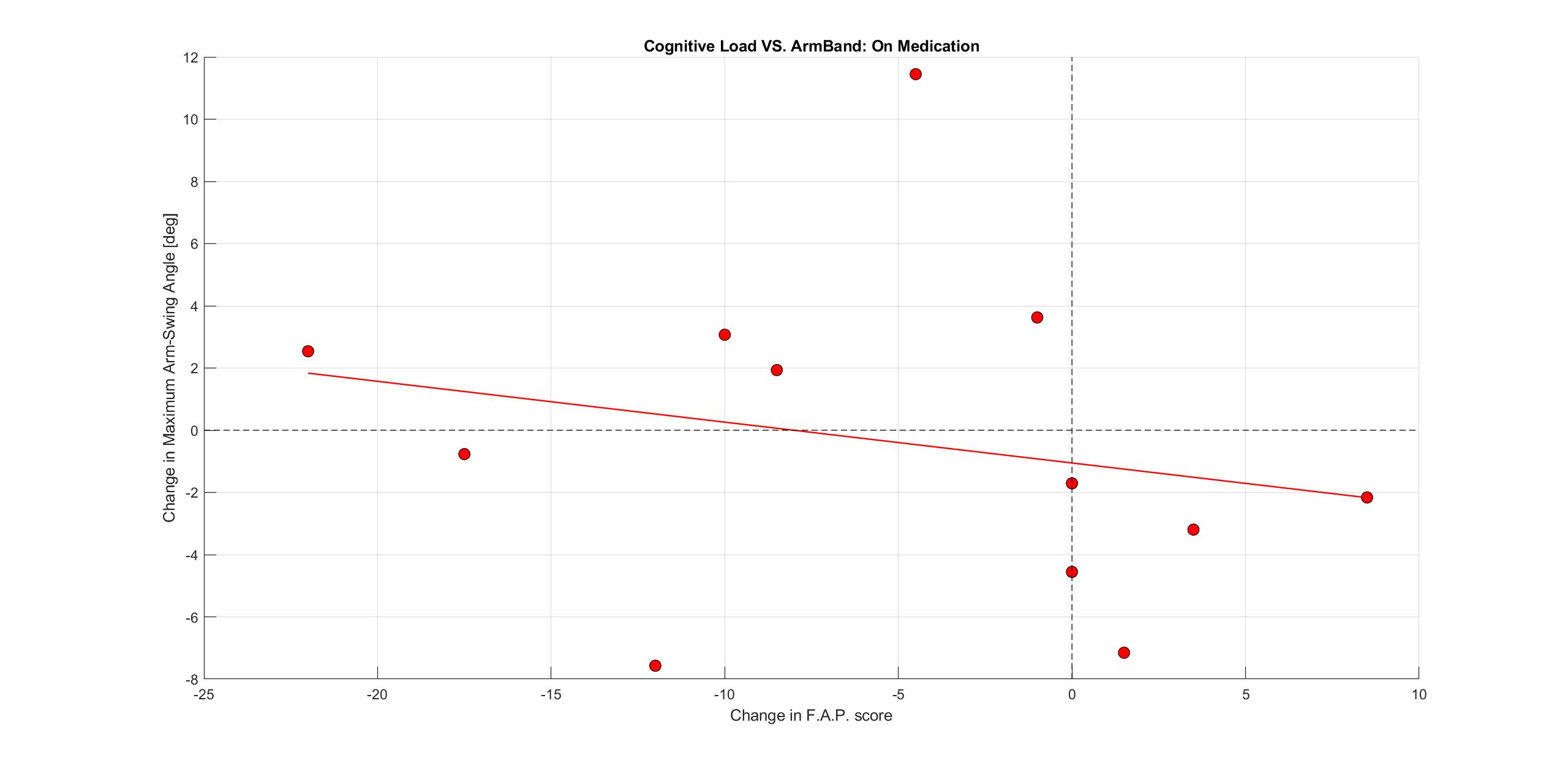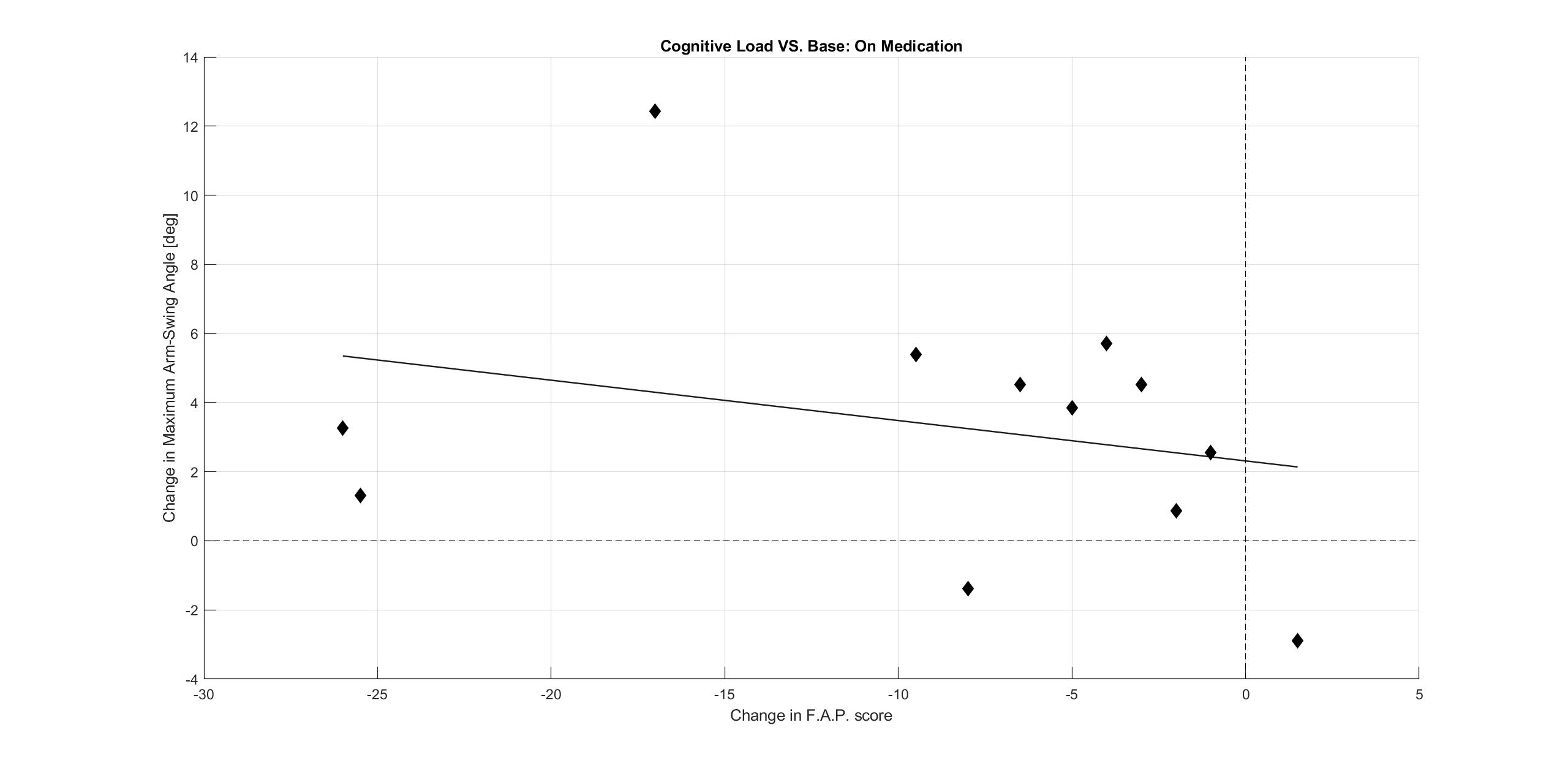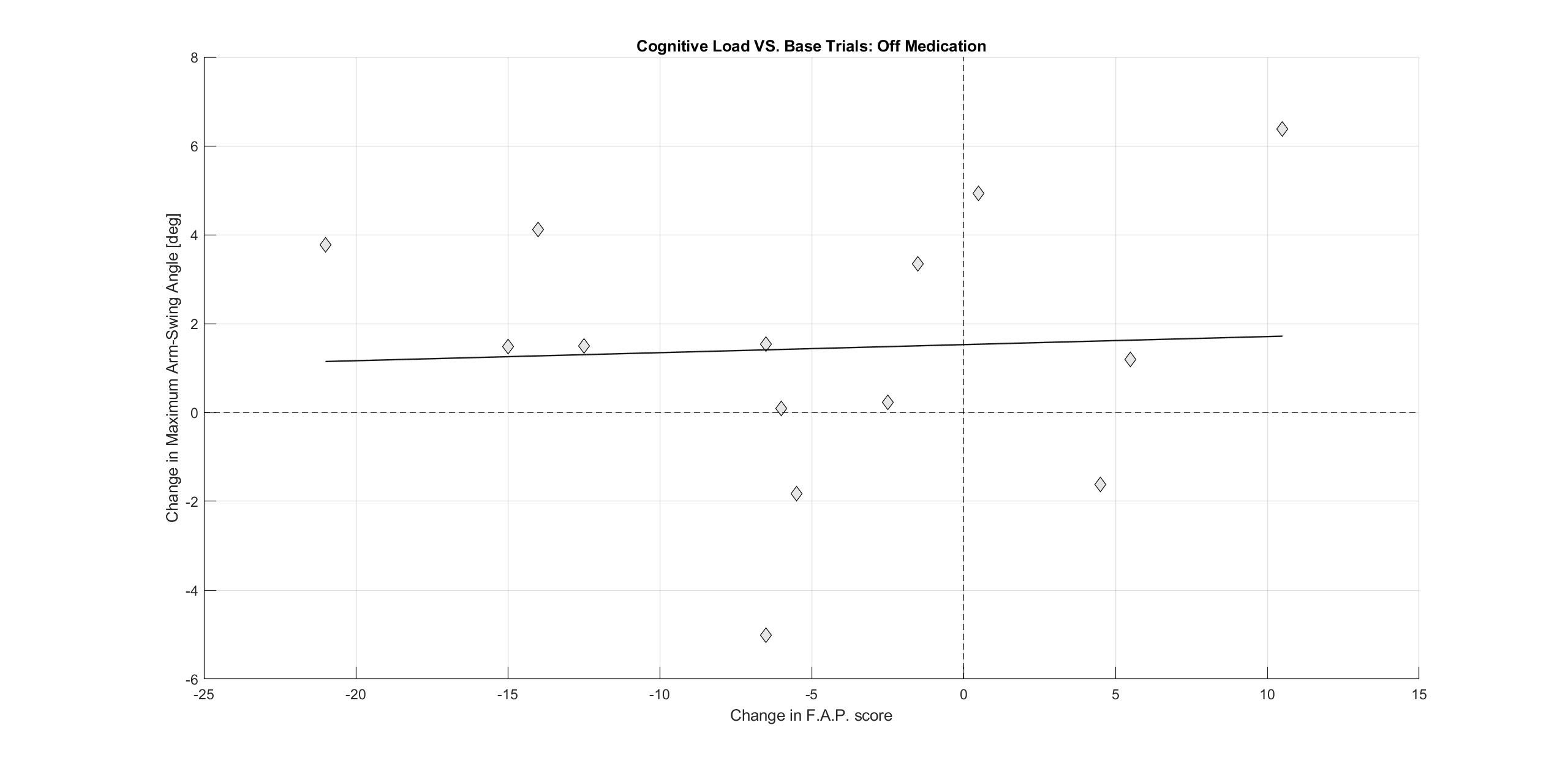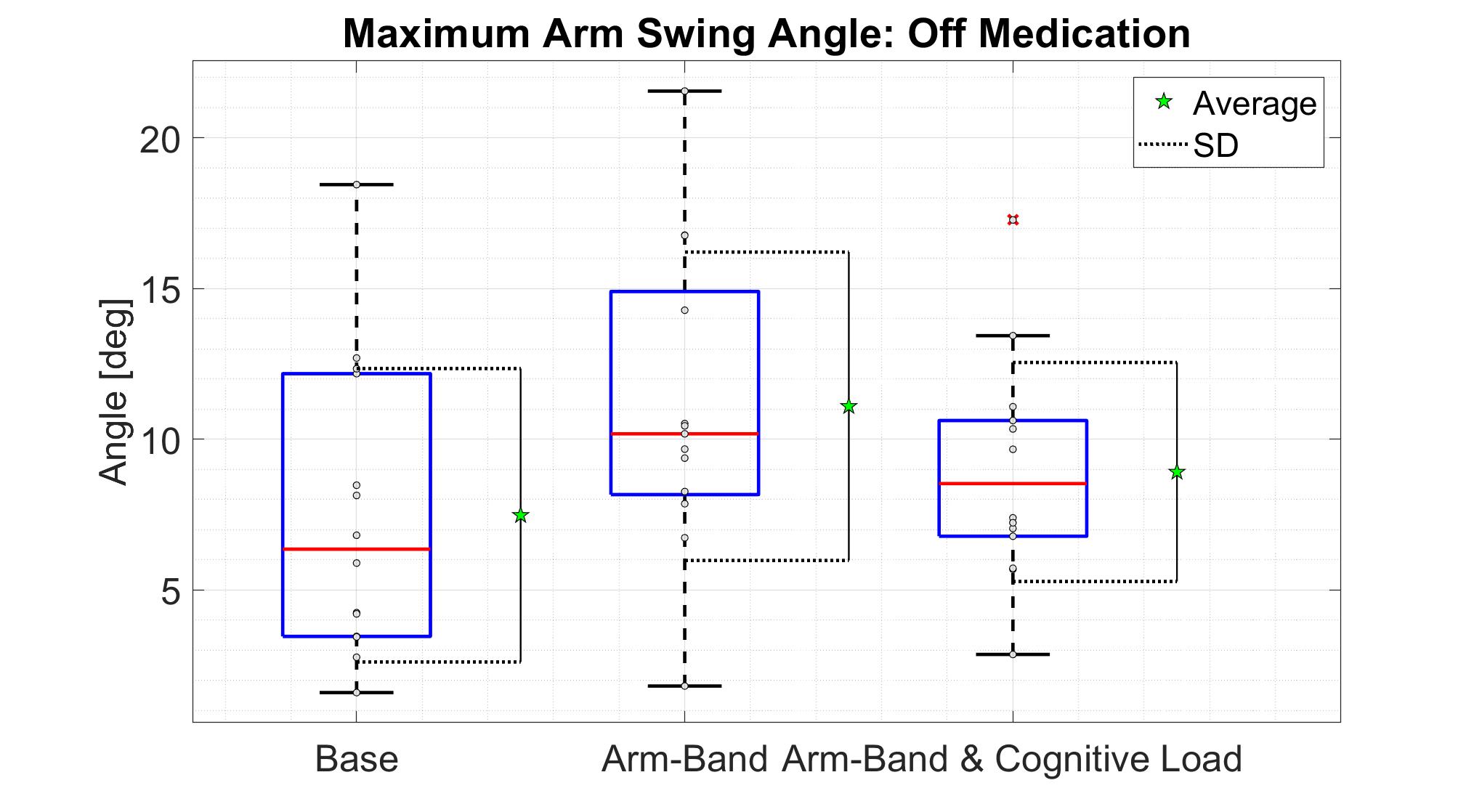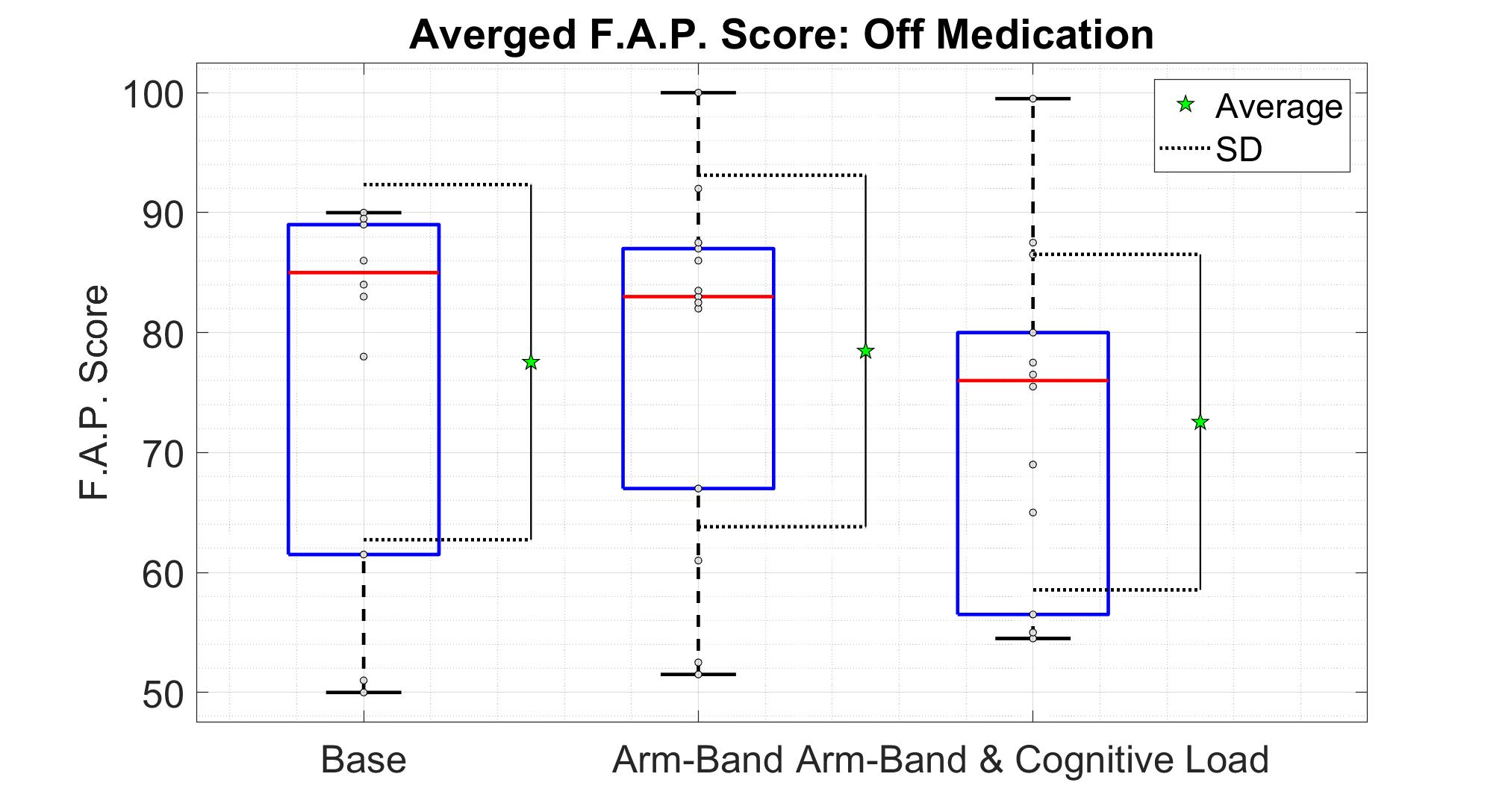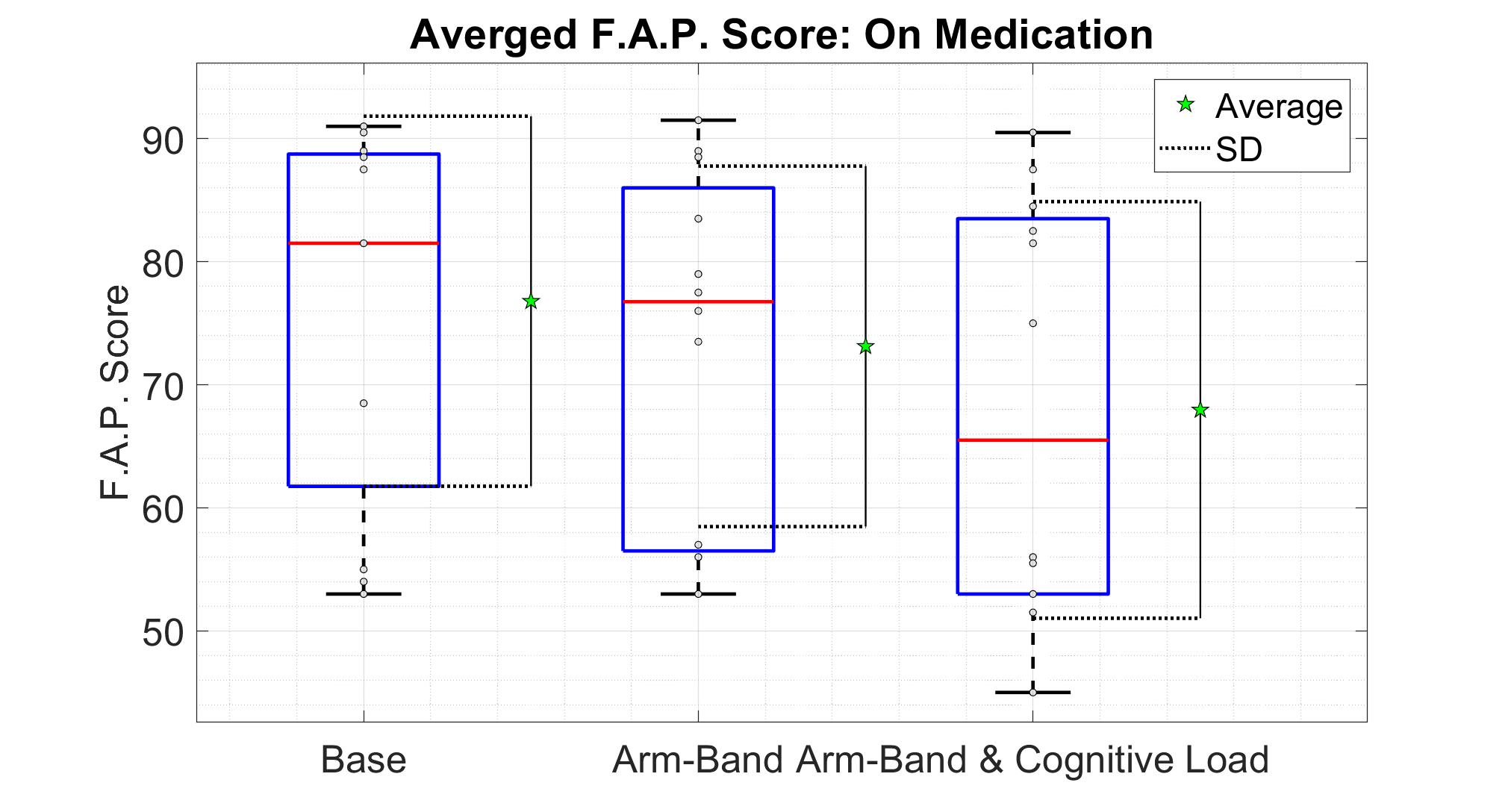Category: Technology
Objective: To objectively validate empirical studies regarding the efficacy of a vibratory stimulus on arm swing and fall risk on individuals with Parkinson’s disease (PD).
Background: Decreased arm swing amplitude is a common motoric sign in parkinsonism. Previous studies correlate increased arm swing amplitude with a decreased risk of falling. In a previous study, using the GAITRite walkway and Vicon Motion Capture, we objectively demonstrated that a metronomic vibratory armband (Vibronome iPhone application) was able to act as a mnestic cue to induce arm swing in individuals with PD, subsequently lowering their risk of falling (1). This study uses an armband that vibrates selectively when arm swing amplitude is absent or low.
Method: 14 PD individuals participated in walks using an armband device designed to selectively vibrate when their arm swing was too low in amplitude. GAITRite walkway system measured gait performance and risk of falling through the Functional Ambulation Profile (FAP) score; Vicon Motion Capture software was used to measure amplitude of arm swing. 2 sessions were held (1 on medication and 1 off medication) All participants completed two baseline walks with the armband turned off, two armband-prompted walks, and two walks with a standardized cognitive loading exercise.
Results: Walks with armband intervention showed no significant difference in arm swing amplitude and FAP scores while participants were both on (p=0.259) and off (p=.496) off their medications. While cognitive loading exercises diminished FAP scores with armband intervention, it was not deemed statistically different while participants were both on (p=0.070) and off (p=0.072) their medications.
Conclusion: The results do not confirm the hypothesized positive effect of armband intervention on arm swing and FAP scores in PD patients. These results also suggest that a constant metronomic vibratory stimulus serves as a better method to remind individuals with PD to swing their arms than a selective vibratory stimulus. These findings do not enhance our past study when observing arm swing amplitude and FAP score. We hypothesized that this discrepancy may be due to participants committing too much attention to “please” the device in order to avoid the vibratory stimulus. The shift in focus may have resulted in an unnatural gait and arm swing cycle.
References: Taber, William Forrester, et al. “Determining the Efficacy of a Vibration Induced Intervention on Improving Arm Swing and Subsequent Gait Stability in Parkinsonian Patients (P2. 8-019).” (2019): P2-8.
To cite this abstract in AMA style:
A. Harbour, J. VanWart, Z. Mercer, K. Pique, R. Golan, J. Clark, C. Maitland. Efficacy of a Vibrational Armband in Maintenance of Forced Arm Swing in Parkinsonism [abstract]. Mov Disord. 2020; 35 (suppl 1). https://www.mdsabstracts.org/abstract/efficacy-of-a-vibrational-armband-in-maintenance-of-forced-arm-swing-in-parkinsonism/. Accessed October 17, 2025.« Back to MDS Virtual Congress 2020
MDS Abstracts - https://www.mdsabstracts.org/abstract/efficacy-of-a-vibrational-armband-in-maintenance-of-forced-arm-swing-in-parkinsonism/

